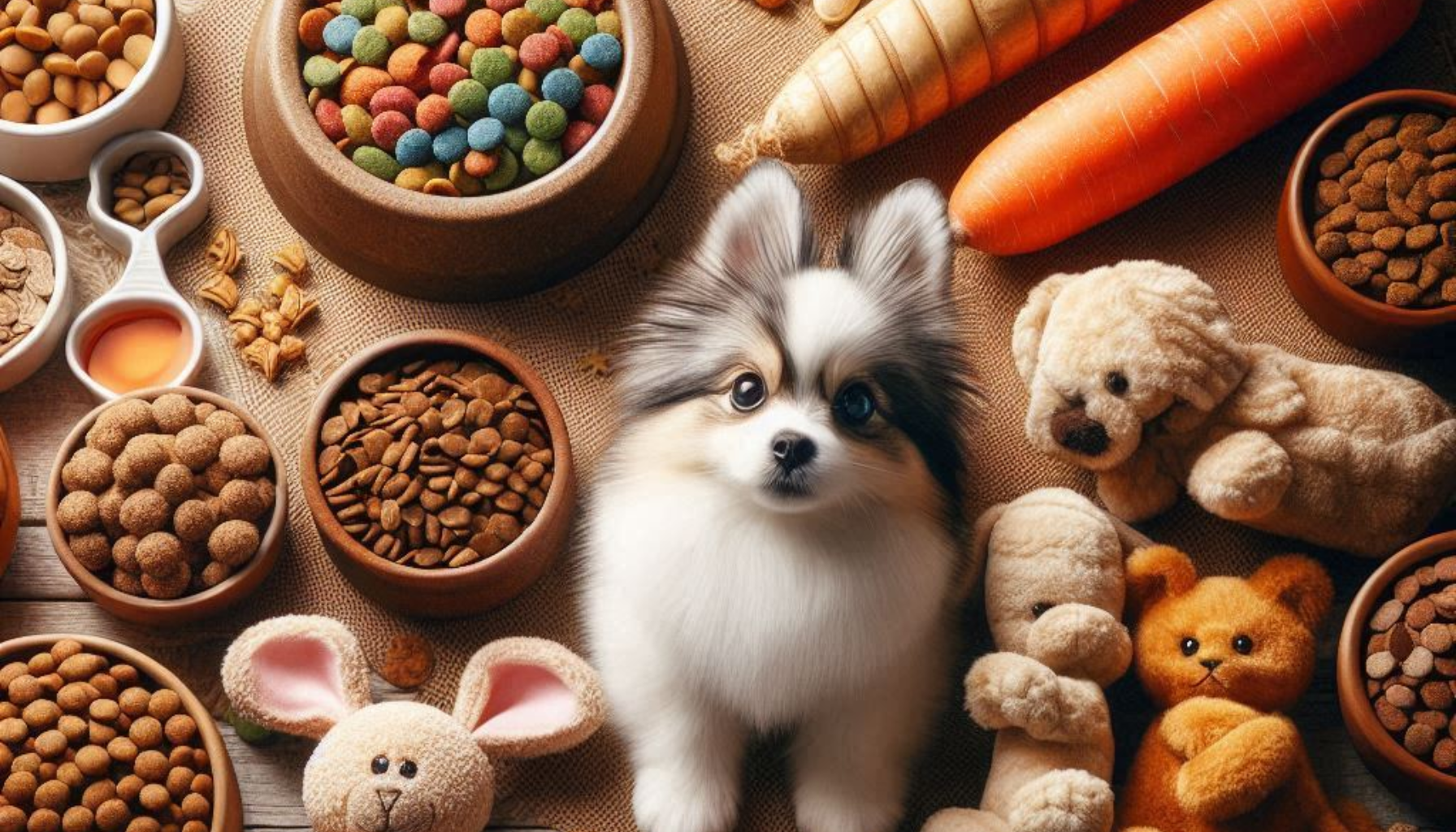Feeding your pet the right diet is one of the most important things you can do for their health. A balanced and nutritious diet helps maintain a healthy weight, strong immune system, and overall well-being. But with so many pet food options available—dry kibble, wet food, raw diets, and homemade meals—it can be overwhelming to choose the best one.
In this guide, we’ll cover everything you need to know to select the best food for your dog or cat!
1. Understand Your Pet’s Nutritional Needs 🥩🥕
Dogs and cats have different dietary needs based on species, breed, age, and lifestyle.
✅ Dogs: Omnivores—need a mix of meat, vegetables, and grains.
✅ Cats: Obligate carnivores—require mostly animal protein and fats.
🔹 Essential Nutrients for Dogs & Cats:
✔ Protein (meat, fish, poultry) → Builds muscles and tissues.
✔ Healthy fats (omega-3 & omega-6) → Supports skin, coat, and brain function.
✔ Vitamins & minerals → Strengthens immunity and overall health.
✔ Fiber (for dogs) → Aids digestion and gut health.
📌 Tip: Always check food labels to ensure they meet AAFCO (Association of American Feed Control Officials) nutritional standards.
2. Dry Food vs. Wet Food: Which Is Better? 🍖🥫
Both dry kibble and wet food have benefits and drawbacks.
🦴 Dry Food (Kibble) Pros & Cons
✅ Affordable & convenient storage
✅ Helps clean teeth by reducing plaque
✅ Long shelf life
🚫 Lower moisture content (less hydration)
🚫 Some brands contain fillers and artificial additives
🥩 Wet Food (Canned) Pros & Cons
✅ Higher moisture content (great for hydration)
✅ More flavorful and palatable
✅ Easier to chew (good for older pets)
🚫 More expensive than dry food
🚫 Shorter shelf life after opening
📌 Best Option? Many pet owners mix dry and wet food for a balanced diet.
3. How to Read Pet Food Labels 🏷️🔍
Understanding pet food labels is key to making a good choice.
✅ Look for:
✔ High-quality protein as the first ingredient (chicken, beef, fish)
✔ Whole ingredients (real meat, vegetables, and healthy fats)
✔ Added omega fatty acids (for skin and coat health)
🚫 Avoid:
❌ By-products and fillers (corn, wheat, soy)
❌ Artificial preservatives (BHA, BHT)
❌ Excess carbohydrates (can cause obesity)
📌 Tip: The first 5 ingredients make up most of the food—ensure they are high quality!
4. Choosing the Right Food Based on Life Stage 🐶🐱
Pets have different dietary needs based on their age and activity level.
🐾 Puppies & Kittens (Growth Stage)
✅ High protein and fat for development
✅ DHA (for brain and vision health)
🐾 Adult Dogs & Cats (Maintenance Stage)
✅ Balanced protein, fats, and fiber
✅ Adjust portions based on activity level
🐾 Senior Pets (7+ Years Old)
✅ Lower fat & calories (to prevent weight gain)
✅ Added glucosamine & chondroitin (for joint health)
📌 Tip: Choose life-stage-specific food to meet your pet’s changing needs!
5. Is a Grain-Free Diet a Good Choice? 🌾🚫
Grain-free pet food has become popular, but is it necessary?
✅ Some dogs & cats benefit from grain-free food—especially those with allergies or sensitivities.
🚨 However, some grain-free diets may lack essential nutrients and have been linked to heart disease in dogs.
📌 Tip: Unless your pet has an allergy, whole grains (like brown rice & oats) can be part of a balanced diet.
6. Is Raw or Homemade Food Better? 🥩🍗
Some pet owners prefer homemade or raw diets, but there are pros and cons.
✅ Potential Benefits:
✔ More control over ingredients
✔ No artificial additives or preservatives
🚫 Potential Risks:
❌ Nutritional imbalances (without veterinary guidance)
❌ Raw diets may contain harmful bacteria (like Salmonella or E. coli)
📌 Tip: If feeding homemade or raw, consult a veterinary nutritionist to ensure a balanced diet.
7. How to Transition to a New Food Safely 🔄🐾
Switching pet food too quickly can cause digestive upset.
Step-by-Step Food Transition Guide:
1️⃣ Day 1-2: 75% old food + 25% new food
2️⃣ Day 3-4: 50% old food + 50% new food
3️⃣ Day 5-6: 25% old food + 75% new food
4️⃣ Day 7: 100% new food
📌 Tip: Watch for signs of diarrhea, vomiting, or refusal to eat—slow down if needed.
8. How Much Should You Feed Your Pet? 🍽️🐕🐈
Overfeeding can lead to obesity, while underfeeding can cause malnutrition.
✅ Follow feeding guidelines on the pet food package.
✅ Adjust portions based on activity level, age, and metabolism.
✅ Use measuring cups—don’t just “eyeball” it!
📌 Tip: Monitor your pet’s body condition score (BCS) to keep them at a healthy weight.
9. Special Diets for Pets with Health Conditions 🏥
Some pets need special diets due to medical issues.
🔹 Sensitive Stomach? → Choose limited-ingredient diets.
🔹 Allergies? → Try novel protein sources (duck, venison, fish).
🔹 Kidney Disease? → Feed low-protein, low-phosphorus diets.
📌 Tip: If your pet has a health condition, ask your vet for dietary recommendations.
10. Choosing the Best Brand: What to Look For 🏆
With so many pet food brands, how do you choose the right one?
✅ Look for:
✔ Brands with veterinary nutritionists on staff
✔ Foods tested in feeding trials (not just formulated)
✔ Transparency in ingredient sourcing
🚨 Beware of marketing tricks! Just because a brand says “premium” or “natural” doesn’t mean it’s the best choice.
📌 Tip: Check customer reviews and recall history before buying a new brand.
Final Thoughts: The Best Food = A Healthier, Happier Pet! 🐾🍖
Choosing the right food is essential for your pet’s health, longevity, and happiness.
✅ Pick food that meets AAFCO nutritional standards
✅ Choose based on life stage, breed, and activity level
✅ Avoid artificial additives, fillers, and low-quality ingredients
✅ Transition slowly when switching foods
🐾 A well-fed pet is a happy pet! Give them the best nutrition possible!
